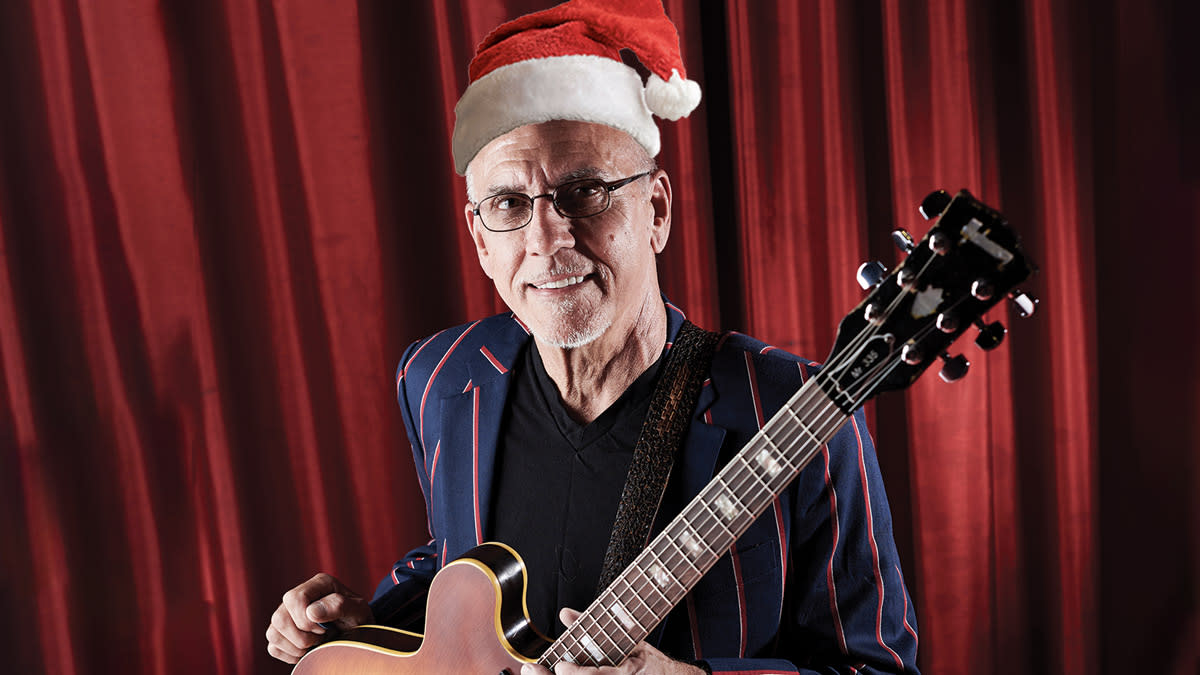With over 700 recorded versions in the last 45 years alone, Silent Night is one of the world's most popular Christmas carols – learn a spellbinding solo jazz guitar arrangement inspired by Larry Carlton and Django Reinhardt

The popularity of the Christmas carol Silent Night is nothing short of phenomenal. It has been translated into more 300 languages, with over 700 recorded versions in the last 45 years alone.
Bing Crosby’s version sold more than 30 million copies and it continues to be a cornerstone of yuletide celebrations all over the world. While many of the carols performed around Christmas can be traced back over a 1000 years, Silent Night dates back just a little over 200, composed initially as a poem in 1816 by Rev Joseph Mohr, and set to music two years later, on Christmas Eve 1818 by Franz Xaver Gruber.
It was performed that same evening at Christmas Eve Mass in the church of St Nicholas in Oberndorf, near Salzburg, Austria.
Part of the popularity of Silent Night could perhaps be attributed to its simplicity, with the initial performance featuring a simple choral accompaniment that the choir could learn in a matter of hours, rather than the usual weeks and, interestingly, Mohr and Gruber eschewed the tradition church organ, electing instead to use guitar.
Reports vary as to the reasoning for this decision, but if you are ever in the neighbourhood of Hallein, Austria, you can visit the Silent Night Museum and witness the very same guitar that Joseph Mohr used to premier this legendary composition. Many guitarists, including the great Larry Carlton, have recorded Silent Night, too.
Our arrangement of Silent Night can be divided into a number of sections. While the main theme is performed in D with a 6/8 time signature, we start with a Django-style introduction setting up tension by resolving to A7, the V7 dominant chord. Next up, we see a harmonisation of the famous melody, mainly constructed with four-note block chords punctuated with single-note connections.
A transposition toward F major heralds the improvised solo section, along with a shift in energy towards more of a jazz waltz feel. We return to D major for our final statement of the melody, although here we’re adopting a variation of the jazz manouche ‘La Pompe’, a steady rhythm usually played with four relatively even quarter notes per bar, but here we’re accenting two groups of three eighth notes to match our 6/8 time signature.
After a brief held chord, we round things off with a beautiful outro, complete with a cheeky machinehead dive that’s sure to impress your audience as well as make them smile.
There’s such a lot to be gained from arranging a well-known piece in this way, so we’d urge you to firstly get as much of this arrangement under your fingers as possible, and then consider constructing an arrangement of another Christmas carol of your own. You can make things as simple or as complex as you like. They’re also hugely musically rewarding and you’ll undoubtedly learn a great deal in the process. Enjoy!
Get the tone
Amp Settings: Gain 3, Bass 5, Middle 5, Treble 4, Reverb 3
I used my Benedetto Bravo into a clean combo setting on a Line 6 Helix for the main part. Try leaving your guitar’s volume somewhere near the middle, as the treble roll-off helps to warm things up and is arguably less muddy than turning down the tone. The track is completed with rhythm guitar, courtesy of my Aylward Selmer-style and an acoustic double bass.
Performance notes
Intro [Bars 1-4] We begin with a Django-inspired intro, spelling out A9#5 and B9#5/A, derived from fragments of the A whole-tone scale (A-B-C#-D#-E#-G). We end this phrase with a line that moves in contrary chromatic motion to the double bass, targeting the root note of A7, the V7 in the key of D.
Chord/Melody [Bars 5-16] Here we introduce the main melody, although arranged with a combination of four-note chord voicings connected with single-note lines and the occasional harmonic chord for good measure.
In keeping with the Django style, you’ll notice a lot of maj 6 (R-3-5-6) and 6/9 voicings (R-3-5-6-9), along with a set of what look like symmetrical diminished 7th voicings [bar 13], that in this context are being used to imply various inversions of A7b9 (A-C#-E-G-Bb).
[Bars 29-38] We return to D major for our final statement of the melody, articulating the theme with a combination of single-note lines, octaves and double-stops. While the main essence of the line is kept intact, note the embellishments, decorations and articulations along the way.
Naturally, you’re free to add these in any way you see fit; I didn’t play it exactly the same way during my run-throughs but the transcription is an accurate representation of the performance that made the take.
Outro [Bars 39-45] We round off our arrangement with a snappy oblique motion ending that I’ve ‘borrowed’ from my old boss, John Jorgenson, followed by an open-string machinehead dive straight out of the Django lick-book.
For the chord voicings [Bars 41-42], the notes on the second and third strings remain in place, albeit with shifting fingerings, while the bass notes rise in semitones to connect Bb/F to D6/A.

